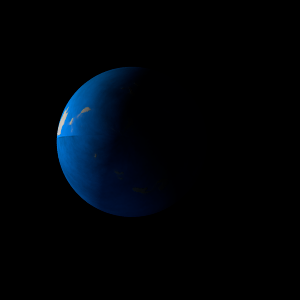|
|
Space Astro
|
Info for exoplanet "Taybepho"
| Scientific (actual) data |
|---|
| Name | K2-223 b |
| Planet status | Confirmed |
| Radius | 0.079 |
| Orbital period | 0.50565 |
| Semi major axis | 0.0127 |
| Discovered | 2018 |
| Updated | 2021-02-05 |
| Tconj | 2457580 |
| Impact parameter | 0.41 |
| Temperature (kelvin) | 2271 |
| Publication | Published in a refereed paper |
| Detection type | Primary Transit |
| Alternate names | 2MASS J12211347-1016552 b, EPIC 228721452 b, EPIC 228721452.01, WISE J122113.48-101655.4 b |
| Star name | K2-223 |
| Right ascension | 185.31° |
| Declination | -10.28° |
| Mag j | 10.177 |
| Mag h | 9.946 |
| Star distance | 201.1 |
| Star metallicity | 0.12 |
| Star mass | 1.06 |
| Star radius | 0.99 |
| Star temperature | 5835 |
| Star alternate names | 2MASS J12211347-1016552, EPIC 228721452, WISE J122113.48-101655.4 |
| Wikipedia article | K2-223 b |
Back
| |
| Fictional info (?) |
|---|
| Suggested name | Taybepho |
| Planet type | Hot planet |
| It is a hot planet planet with a mass one-thousandth that of K2-223, but two-and-a-half times that of all the other planets in its solar system combined. It is the coldest planetary atmosphere in its solar system, with a minimum temperature of 58°K (-215°C), and has a complex, layered cloud structure with carbon dioxide thought to make up the lowest clouds, and water the uppermost layer of clouds. |
| Estimated population | 40000000000 |
| Atmosphere | Water | 73% |
| Carbon dioxide | 26% |
| Oxygen | 0.032% |
| Methane | 0.00082% |
| Atmospheric pressure | 9 bar |
 |
| Moon | Pannoe'ronma Tus | Huge almost round ice comet |
| Rihea Da | Huge slightly egg-shaped rocky moon |
| Spon | Large irregular oceanic comet |
| Calipadeuces'da | Huge round rocky planetoid |
| Theecar | Very small irregular gaseous comet |
| Thelsidelia Lin | Large slightly egg-shaped gaseous asteroid |
| Thonemede Mipny | Large potato shaped rocky moon |
| Pannar Stothi | Medium-sized round gaseous planetoid |
| Penoesur Bosdora | Medium-sized round ice moon |
| Puckcu Hyr | Very small slightly egg-shaped oceanic planetoid |
| Gadaae-kal | Medium-sized round rocky comet |
| Paniori Pa | Medium-sized potato shaped rocky asteroid |
| Clispon Lideuces | Very small slightly egg-shaped crater-filled moon |
| Carthea-pal | Large potato shaped crater-filled moon |
| Bosnere'sutmathe | Huge irregular rocky asteroid |
| Muntho Tur | Very small round rocky moon |
| Bautiber Thybauti | Small round oceanic moon |
| Syco | Large round crater-filled asteroid |
| Medeia Heara | Very small almost round rocky asteroid |
| Google search for Taybepho |
|
Website by Joachim Michaelis
|
|
|
|